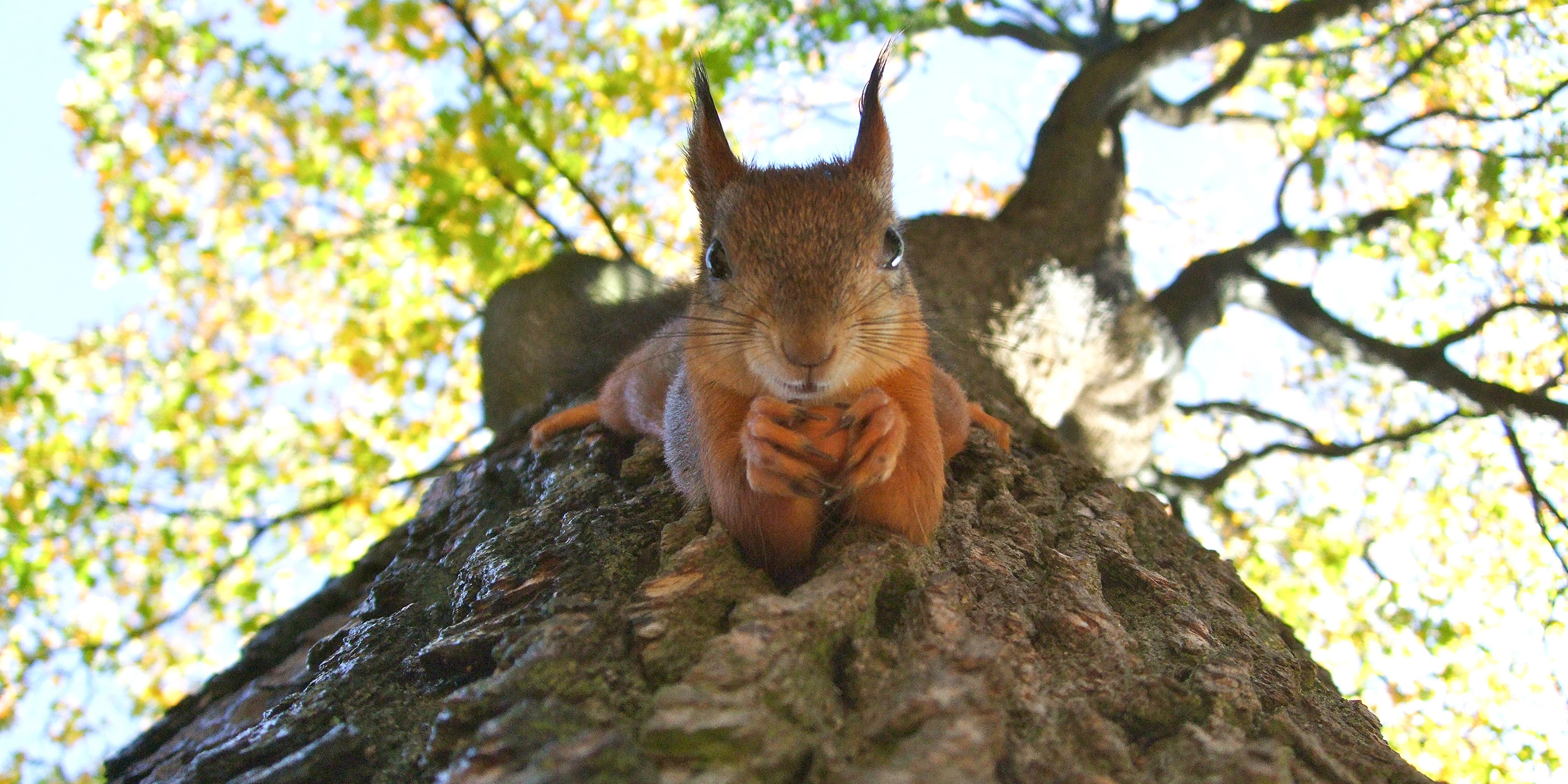Originally published 24 September 1990
Two sounds of autumn are unmistakable, says naturalist Hal Borland, “the hurrying rustle of crisp leaves blown along the street or road by a gusty wind, and the gabble of a flock of migrating geese.”
To these one might add the tunk-tunk of acorns falling on the roof.
The squirrels are up there playing Tarzan among the branches of overhanging trees. And down comes the shower of acorns — tunk-tunk — bouncing off the shingles.
The squirrels, it seems, are enjoying a last boisterous fling before gathering the harvest. And why not? There’s plenty to go around. The gutters are bulging with acorns and the ground about is littered.
According to Indian lore, a rich crop of acorns means we are in for a hard winter. If so, then nature has a generous way of anticipating the rigors of the season. Squirrels stash away acorns in huge numbers as winter reserves, often burying them in the ground and forgetting where they put them. The buried acorns are in a perfect position for germinating next spring, protected from the winter freeze by a few inches of soil. In his Guide to Nature in Winter, Donald Stokes suggests that many of our northern oaks have grown from forgotten squirrel snacks.
Not exactly French truffles
Birds eat acorns — ruffed grouse, blue jay, nuthatch, titmouse — pecking open the shell and gobbling the nut. Wild turkeys gulp down shells and all, dozens in a single meal. Bear, deer, and raccoons, too, depend on acorns in winter. Donald Stokes observes that no other tree provides so much food for so many as do the oaks. Acorns are probably our wildlife’s must important sustenance.
Humans eat them too, usually after lots of boiling, but sometimes right off the ground. I’ve nibbled acorns and found them decidedly unpalatable. Which is why I’m always surprised that Henry David Thoreau goes on about them so in his journals. The hermit of Concord is positively rhapsodic about the sweet taste of acorns. You would think he was talking about French truffles or Italian chocolates.
It’s white oak acorns he’s talking about, the least bitter of these bitter-tasting fruits. “To my taste they are quite as good as chestnuts,” says Thoreau, professing to prefer them to a slice of imported pineapple. “Come off it, Henry, you are trying too hard to be the woodsy epicure. “Their sweetness is like the sweetness of bread.” Can he possibly be talking about the same acorns I’ve tasted?
In an unguarded moment in his journal Thoreau admits that acorns, like wild apples, require an “outdoor appetite.” Apparently, when he tried them in the house they were not so pineapple-tasty. Then, catching himself out of character, he quickly adds, “Is not the outdoor appetite the one to be prayed for?”
Well, I dunno. Here’s an outdoorsy recipe to add to your collection. It’s from a book called Wanderings of an Artist by Paul Kane, published in 1859. Kane spent four years traveling thousands of miles across Canada, recording in his sketchbook the lives and habits of Native Americans. Among the Chinook Indians he observed the following culinary practice:
“About a bushel of acorns are placed in a hole dug for the purpose close to the entrance of the lodge or hut, covered over with a thin layer of grass, on top of which is laid about half a foot of earth. Every member of the family henceforth regards this hole as the special place of deposit for his urine, which is on no occasion to be diverted from its legitimate receptacle. In this hole the acorns are allowed to remain four or five months before they are considered fit for use…the product is regarded by them as the greatest of all delicacies.”
Chinook olives. That’s what the whites called this Chinook treat.
Kane’s tale may offend fastidious modern sensibilities, but the Chinook way of treating acorns served a purpose. Acorns have long been an important foodstuff in many parts of the world, including Mexico and Europe, but only after the tannic acid has been leached from nuts. For Native Americans this usually meant burying the acorns underground for long periods of time or suspending them in running water.
Pilgrims preferred turkey
During their first hungry winter in Massachusetts the Pilgrims were lucky to find baskets of acorns the Indians had buried in the ground. Those buried nuts may have been a lifesaver, but as soon as they could the Pilgrims switched to another Indian treat — turkey with all the trimmings — and never looked back.
Still, some modern outdoor epicures claim to relish acorns, and handbooks of edible wild plants contain lots of allegedly delicious acorn recipes. Thoreau tells us that after an acorn snack he felt like he possessed “the heart and back of oak.”
Maybe so, but the tunk-tunk of acorns onto the roof doesn’t whet my appetite. Nibbling a white oak acorn on a brisk November day may have a certain derring-do charm, but no one wants to live on them, not any more at any rate, and certainly not prepared in the Chinook way. The fruits of oaks may please the palettes of squirrels and hermits, but most of us prefer to buy our nuts in a can.



